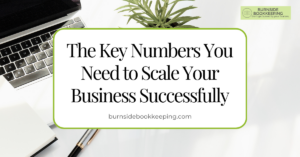5 Signs of a Healthy Business – How to Tell if Your Business is Doing Well

Do you have a healthy business?
5 Signs of a healthy business: There are a variety of measurements that will actually allow you to determine the health of your business. While some techniques might be excellent business metrics, others might not be suitable or appropriate. With that in mind, let’s get pretentious about finance and explore the things that will help you determine if your company is in good financial health.
1. Revenue is growing.
The growth doesn’t have to be gnarly. In fact, growing too fast can be dangerous. Steady growth over time demonstrates a strong outlook.
2. Your expenses aren’t growing faster than your revenue.
Keep an eye on how expenses are growing. Make sure that the increases in your expenses don’t outpace the growth you’re seeing in revenue. An easy way to look at this is to look at it as a percentage increase.
3. You’ve got a mix of repeat + new customers.
Having new customers protects you from relying on your current customer base as your only revenue source. Having new customers in the pipeline not only helps hedge that risk, but it also has the potential to increase revenue growth.
4. You’ve got money in the bank.
The result of revenue growing faster than expenses over time is money in the bank. A healthy cash balance is a sign of long-term growth. A low or stagnant cash balance is a sign that your business is not sustainable. While it’s important to invest in your business to continue to grow it, you also want to make sure to keep a healthy amount of cash (several months’ worth of expenses) in the bank.
5. Your profit margins are high.
A profit margin is the portion of your sales that is a profit. The profit is the difference between the amount you gained on a sale and the amount you spent to make the sale. Here’s how you calculate the net profit margin: Net Profit ÷ Revenue = Net Profit Margin. Even if you’re making sales, your net profit margin could still be low, depending on a whole host of factors. Since the components of the equation are revenue and costs, anything that impacts those factors will impact your profit margin. Your pricing strategy, labor and production costs, and administrative costs will all impact your net profit margin.
If you’ve never used financial ratios before, these are terrific places to start. Keep in mind that testing and making hypotheses are important aspects of business. If you need assistance in knowing how to monitor the health of your business and what factors affect the metrics, we are happy to assist you. Schedule a call with us today!
Contact us – we’re here to help!
Schedule a free, no-obligation Discovery Call with us: https://hello.burnsidebookkeeping.com/public/appointment-scheduler/630cfb590890c351b5d20c25/schedule
Looking to sign up for QuickBooks Online? Click here for 30% off for the first 12 months: https://quickbooks.grsm.io/karenburnside7448
https://burnsidebookkeeping.com/#contact
This post may contain affiliate links. Your purchase helps support my work in bringing you real information about best practice bookkeeping.
For Educational And Informational Purposes Only.










